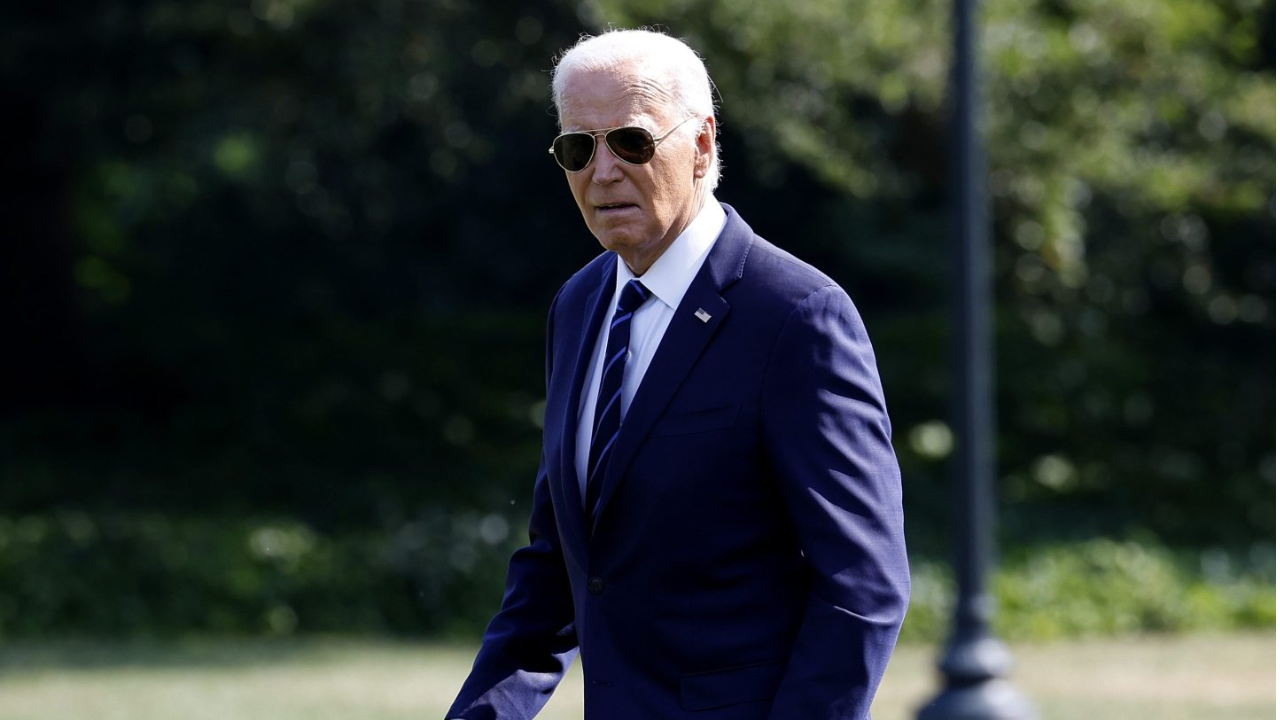President Joe Biden’s unexpected announcement that he is dropping out of the presidential race has injected further uncertainty into the markets at a crucial moment. This decision, which came just hours before U.S. equity futures opened on Sunday evening, followed mounting pressure from fellow Democrats and reports that Biden was considering stepping aside.
Table of Contents
ToggleMarket Reactions to Biden’s Withdrawal
Biden’s announcement saw initial market reactions with bitcoin prices (BTCUSD) diving before rebounding to over $68,000, marking a 1% increase and the highest level in more than a month. Stock futures also opened slightly higher: S&P 500 (ES00) futures rose 0.3% to 5,565, Nasdaq-100 futures (NQ00) increased by 0.4% to 19,780, and Dow Jones Industrial Average futures (YM00) climbed by 61 points, or less than 0.2%, to 40,628 as of 8:30 p.m. Eastern.
Investors are initially cautious, concerned that Biden’s exit signifies a new level of political uncertainty. “Biden stepping down is a whole new level of political uncertainty. This may be the catalyst for market volatility that is overdue,” said Gina Bolvin, president of Bolvin Wealth Management Group, in an email to MarketWatch.
The withdrawal raises numerous unknowns, especially as Democrats rush to select new presidential and vice-presidential nominees. Biden’s endorsement of Vice President Kamala Harris adds another layer of complexity to the unfolding political landscape.
The Trump Trade and Market Volatility
Ed Mills, Washington Policy Analyst at Raymond James, suggests that some aspects of the “Trump trade” might reverse this week. Stocks linked to the Trump trade, such as small-caps, financials, and specific health-care and energy names, could experience a shift in momentum. Mills predicts a “wait-and-see” period as investors gauge the Democrats’ next moves.
The broader impact of Biden’s decision includes a mix of crosscurrents tugging at markets, further muddying the waters. The previous week saw a significant pullback in Big Tech and tech-adjacent stocks, with the Nasdaq-100 (NDX) experiencing its largest decline in three months. Some attributed this weakness to reports that Biden might not seek a second term, alongside other factors such as a major IT outage and doubts about the sustainability of the AI-driven market rally.
This selloff coincides with the historically weakest three-month period for stocks, from mid-July to mid-October. The selloff also increases pressure on influential stocks, including those in the “Magnificent Seven,” to deliver impressive earnings results soon. Steve Sosnick, chief market strategist at Interactive Brokers, emphasizes that earnings performance could have a more significant impact on markets than election-related news.
Political Uncertainty and Market Dynamics
The Cboe Volatility Index (VIX), often referred to as Wall Street’s “fear gauge,” jumped from around 12.5 to 16.5 last week, indicating that investors are bracing for a bumpy ride ahead. Some believe that Biden’s exit might boost markets by reducing the perceived risk of a “Red Wave” in November.
Marko Papic, a strategist at BCA Research, argues that a GOP sweep poses the biggest near-term risk for equity markets. Papic will be closely watching the response of longer-dated bond yields to Biden’s announcement, noting the significant influence of the Trump trade on Treasurys. The yield curve has steepened since Biden’s poor debate performance last month, reflecting market adjustments to political developments.
Last week, the S&P 500 (SPX) fell by 2% to 5,505, while the Nasdaq Composite (COMP) dropped 3.7% to 17,726.94. Meanwhile, the Dow Jones Industrial Average (DJIA) and the small-cap Russell 2000 (RUT) finished higher. The Dow gained 286.63 points, or 0.7%, to 40,287.53, and the Russell 2000 rose 1.7% to 2,184.35, though it remained 3.5% below its 52-week closing high.
In conclusion, Biden’s withdrawal from the presidential race has introduced new political uncertainty, impacting investor confidence and market dynamics. As the Democratic party scrambles to find new nominees and the markets react to evolving political landscapes, investors must navigate these turbulent waters with caution.













